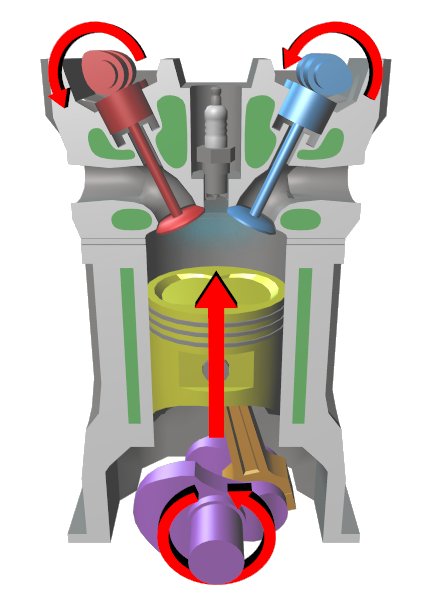
In the combustion phase an ignited charge exerts pressure on the piston crown whilst aįresh charge is drawn through the carburettor into the crankcase via inlet port I.ĭuring the exhausting phase the piston moving down partly uncovers the exhaust port EĪllow the combustion gases to start to discharge. Two stroke engines are used for motor cycles,lawn mowers, chain saws and marine engines. Notes on the theoretical consideration of the otto and deisel cycles are found on

The fourth stroke is the exhaust stroke when the products of combustion are driven out of the cylinder.At the end of the power stroke the exhaust valve is opened.The third stroke - the working/power stroke results from the hot products of combustion expanding driving the piston out.At the end of the compression stroke the fuel-air mixture is ignited by a spark.In the second stroke (compression) the piston compresses the mixture.In the first stroke (charging) the piston moves out and the cylinder air-fuel is drawn into the cylinder.The inlet valve is open prior to commencement of the first stroke.Work is done on the third stroke and the products of combustion are exhausted on the fourth stroke. Into the cylinder on the first stroke,it is compressed and ignited on the second stroke In essence in a four stroke internal-combustion engine an explosive mixture is drawn Mechanisms working on either cycle can be designed for spark-ignition or compression ignition (diesel)Īs the method of initiating combustion according to the engine speed, size, and type of fuel


Two strokes of the piston, that is each revolution of the crankshaft. The two stroke completes one engine cycle for every The four stroke completes one engine cycle for everyįour strokes of the piston, that is every two revolutions of the crankshaft. Petrol, paraffin, gas and oil internal combustion engines generally work on four-stroke

Thermos Index Thermodynamics Four Stroke Engines Thermodynamics Two / Four Stroke Engine Notes


 0 kommentar(er)
0 kommentar(er)
